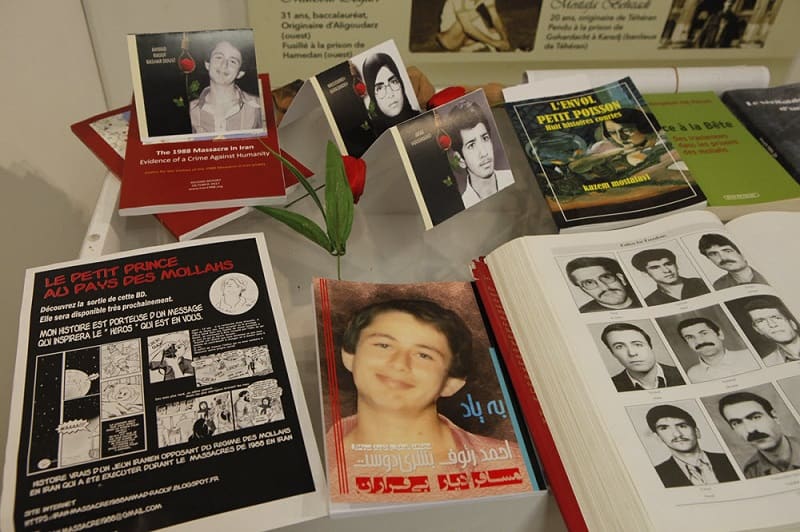Massacre of MEK in Iran following Khomeini’s Fatwa
31 years ago, after eight years of bloody war with Iraq, Ruhollah Khomeini, the founder of the mullahs’ regime, acquiesced to a UN-brokered ceasefire. Khomeini, who had vowed to continue the war to the end, was forced to abandon his destructive ambitions thanks to the efforts of the MEK and the National Liberation Army. He later described the ceasefire as a “chalice of poison.”
Khomeini, who had a deep hatred and fear from the MEK, was terrified of the possible aftermath of the ceasefire, and saw the survival of his regime in the annihilation of his main opposition movement.
In July 1988, shortly before declaring the acceptance of the ceasefire, Khomeini issued a religious decree in which he ordered the purging of Iran’s prisons of anyone who still supported the MEK and their ideals. Khomeini’s decree triggered what became known as the 1988 massacre of MEK political prisoners.
In August, Mr. Massoud Rajavi, the head of the National Council of Resistance of Iran (NCRI), warned different UN authorities and bodies about the widespread execution of members and supporters of MEK in Iran’s prisons. “On August 14, 15 and 16 alone, the bodies of 860 executed political prisoners were transferred from Tehran’s Evin Prison to the Behesht-e Zahra cemetery,” Mr. Rajavi wrote in a letter to the UN Secretary General.
In the months that followed, the Iranian regime executed more than 30,000 political prisoners, mostly supporters and members of MEK, in prisons across Iran. The prisoners were sentenced to death in minutes-long trials where they were only asked a single question about their affiliation with the MEK. Prisoners who did not denounce and repent their support for the MEK were immediately sent to the gallows.
After executing the MEK prisoners, the Iranian regime engaged in great efforts to hide the traces of this crime against humanity. The prisoners were buried in mass graves in clandestine locations, and their families were never informed of the fate and whereabouts of their loved ones. According to eye witnesses, many of the families of the executed MEK members are still searching for their loved ones after 31 years.
Khomeini’s goal was to eliminate the MEK. The scale of atrocities his regime committed against the MEK members and supporters was so horrendous that his own heir apparent, Hossein Ali Montazeri, fell out with him and objected to the mass execution of the MEK. Khomeini subsequently deposed Montazeri and forced him into house arrest, where he remained until his death in 2009.
Unfortunately, the international community has remained silent in face of this crime against humanity.
The main perpetrators of this crime against the MEK are still in power today and they occupy posts of great power in the mullahs’ regime. Some of these officials include Chief of Judiciary Ebrahim Raisi, Justice Minister Alireza Avai, and High Councilor of the Judiciary Mostafa Pour Mohammadi. None of these individuals have been tried for their horrific crimes against the MEK and the people of Iran.
The continued impunity of these criminals and the appeasement policy toward Tehran has provoked the mullahs to intensify their suppression and barbarities, not only toward the MEK, but all of Iran’s population.
This year, the MEK and the Iranian resistance held rallies and conferences in several countries and in Ashraf 3, Albania. One of the main features of these events was exposing the mullahs’ 40 years of terrorism, suppression, torture and execution against the MEK and the people of Iran. It is high time that the international community steps up and defends its values and upholds its responsibility to defend universal rights and values. The 1988 massacre of MEK prisoners has remained silent for 31 years. It is time to break this silence.
